The first case of COVID-19 in the U.S. was confirmed on January 20, 2020. More than two years later and the scientific and media communities are still trying to figure out the exact origins of the COVID-19 virus. Did it come from the Wuhan Institute of Virology (WIV) in Wuhan China or did it hop from an animal to a human at the Huanan Seafood Market less than eight miles away?
Two new studies suggest Huanan Seafood Market as the virus’s epicenter
The most recent update to the story has centered on a pair of new scientific studies (here and here) which suggest that the virus originated in Wuhan’s Huanan Seafood Market and not its Lab of Virology. The studies were both published on Feb. 26 and concluded that “SARS-CoV-2 genomic diversity early in the COVID-19 pandemic points to emergence via repeated zoonotic events.”
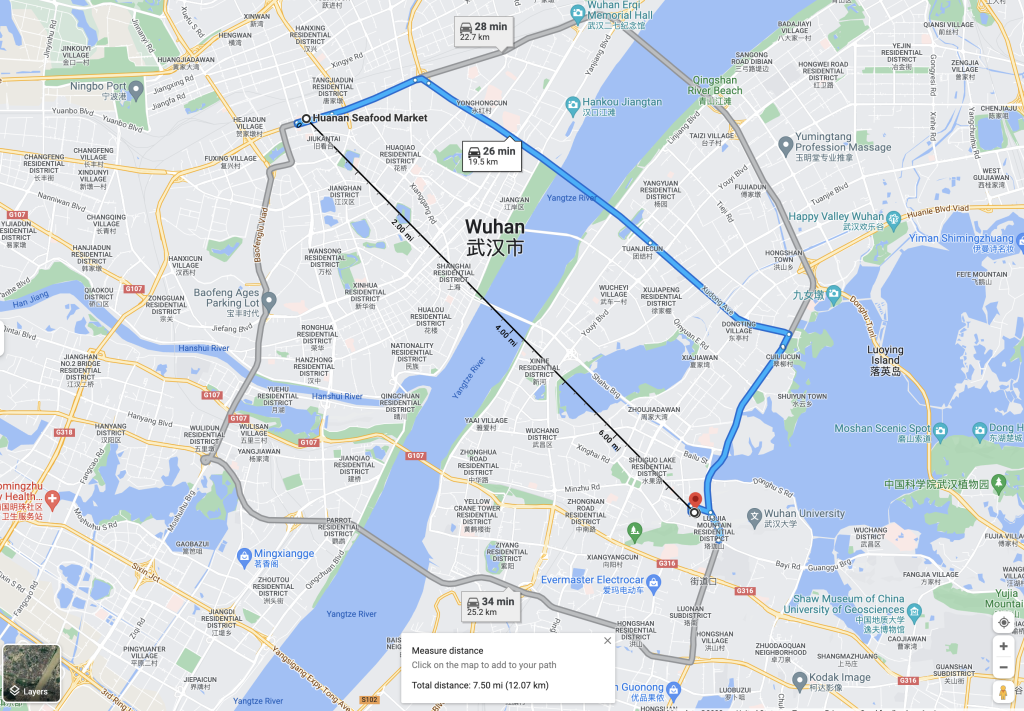
Legacy news outlets including the New York Times, CNN, Newsweek, NPR, The Independent, and The New York Post published reports in unison, echoing the claims made in these two new studies. However, while the two studies may certainly be valuable, neither study has been peer-reviewed—as indicated by their “Preprint” labels—nor published in a scientific journal.
Digging into the actual findings of the studies, the main argument for the Market Theory now relies on the discovery of two evolutionary branches of the virus in the market. The studies refer to these branches as lineages A and B. Finding traces of both lineages in the market is significant because it suggests that the virus “very likely” originated therein.
“By combining spatial and genomic data, we show that both the two early lineages of SARS-CoV-2 have a clear association with the Huanan market,” one of the new studies states. “We also report that live mammals, including raccoon dogs, were sold at the market in late 2019 and geospatial analyses within the market show that environmental samples were strongly associated with vendors selling live animals.”
While the study never identifies the exact animal, or intermediate host, from which the virus spread to humans, it concludes, “Together, these analyses provide dispositive evidence for the emergence of SARS-CoV-2 via the live wildlife trade and identify the Huanan market as the unambiguous epicenter of the COVID-19.”
Though these new studies are the most recent updates to COVID-19’s origins, the investigation thereof has a complex history. And with the science continuing to oscillate between the Lab Leak and Market Theories, it is prudent to consider the rich context behind the theories whenever new studies are released.
The Wuhan Lab “Conspiracy” Theory: A brief history
While the pandemic was unfolding back in 2020, many were understandably interested in the origins of COVID-19. Conspiracy theorists (or so they were called at the time) claimed that the virus leaked from the Wuhan Lab of Virology. In response, many fact-checkers and news outlets set out to “debunk” the theory.
In April 2020, for example, Vox published an article titled “Why these scientists still doubt the coronavirus leaked from a Chinese Lab.” That same month, NPR ran a headline reading, “Virus Researchers Cast Doubt On Theory Of Coronavirus Lab Accident.” The next month, another headline, this time from Vanity Fair, stated that discussions of the virus originating from the Wuhan Lab were “Basically Over.”
The professional fact-checkers took an even stronger stance, profusely claiming that the Lab Leak scenario was not just unlikely, but a conspiracy. Factcheck.org called it a “Bogus” and “Baseless” conspiracy theory at the beginning of 2020. Around that same time, Snopes said the lab leak theory was a conspiracy that “plagued attempts to keep people informed during the pandemic.” And PolitiFact claimed it was a “debunked” conspiracy theory.
Near the heart of this debunking effort was a joint statement from 27 scientists published in The Lancet in February 2020. “The rapid, open, and transparent sharing of data on this outbreak is now being threatened by rumors and misinformation around its origins,” the statement read. “We stand together to strongly condemn conspiracy theories suggesting that COVID-19 does not have a natural origin” (emphasis added).
Ostensibly, the matter was resolved. Multiple news outlets with varying levels of credibility, publications from professional fact-checkers, and a joint statement from over 20 experts in a reputable scientific journal all projected the same truth: COVID-19 did not originate in a lab, and suggestions to the contrary are conspiracies.
Media, Fact-Checkers, and Scientists may have got it wrong
It is alarming, then, how so many professionals have potentially gotten it wrong. On May 14, 2021, 18 other scientists wrote a statement in the journal Science, making a case for why a formal investigation into the lab leak theory should be conducted. They claimed that “greater clarity about the origins of this pandemic is necessary and feasible to achieve.”
“We must take hypotheses about both natural and laboratory spillovers seriously until we have sufficient data,” the scientists insisted, referring to the potential for a lab leak as a hypothesis instead of a conspiracy.
The statement also called into question the methods employed by the World Health Organization (WHO) during the first phase of its investigation into COVID’s origin, but more on that later.
Even three of the scientists who signed their names to The Lancet’s statement mentioned earlier changed their minds, according to the Wall Street Journal (WSJ).
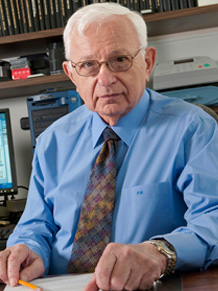
One of those scientists, Bernard Roizman, a University of Chicago virologist, told the Journal, “I’m convinced that what happened is that the virus was brought to a lab, they started to work with it…and some sloppy individual brought it out,” he said. “They can’t admit they did something so stupid.”
It should also be noted that many of the aforementioned media organizations have since offered corrections on the matter. PolitiFact, for instance, stated in May of 2021 that their fact-checking piece was based on sources that “included researchers who asserted the SARS-CoV-2 virus could not have been manipulated.” An assertion that they acknowledged “is now more widely disputed.”
May 2021 also brought a new report from the WSJ about how U.S. intelligence revealed that three scientists at the WIV were hospitalized in fall 2019, “with symptoms consistent with both Covid-19 and common seasonal illness.”
All of this led up to President Biden issuing statement that same month, wherein he asked the “Intelligence Community to redouble their efforts” of their investigation into COVID-19’s origins.
Following the WSJ’s report and Biden’s statement, Facebook announced that it would no longer censor posts suggesting the virus may have been manufactured.
In a matter of months, the media-declared truth was flipped on its head: Conspiracy theorists were now just people with a logical hypothesis.
What’s more, in August 2021, The House of Foreign Affairs Committee’s Republican-led Minority Staff published its report on the virus’s origins, which stated that “the preponderance of evidence suggests SARS-CoV-2 was accidentally released from a Wuhan Institute of Virology laboratory sometime prior to September 12, 2019.”
The widespread mischaracterization
An important detail in this story is the label that was swiftly and broadly used: Conspiracy Theory. Claiming that a plausible scenario is a conspiracy instead of simply reporting what available evidence suggests betrays core principles of journalism and science.
To this day, the specifics of the virus’s specific origin remain unknown. Even the House of Foreign Affairs Committee’s report can only state that “the preponderance of evidence suggests” that the virus was “accidentally released from the Wuhan Lab of Virology,” (emphasis added). And even the title of one of the new studies reads “SARS-CoV-2 emergence very likely resulted from at least two zoonotic events” (emphasis added).
Labeling either theory as a “conspiracy,” then, is a mischaracterization. If the origins aren’t definitively known, then all that can be had are merely theories—whether the evidence suggests the virus came from a lab or if a study found that it’s very likely COVID-19 came from a market.
Even in PolitiFact’s case, they claimed the lab leak scenario was a debunked conspiracy based on “researchers who asserted the SARS-CoV-2 virus could not have been manipulated” (emphasis added). If the information available only asserted that one hypothesis was more likely than another, then it would be inaccurate to report on the issue with such definitive terms as “conspiracy theories” and “debunked” and “baseless.”
As for the scientists behind publications like the one in The Lancet, completely eliminating a hypothesis without “sufficient data” is counterintuitive to science’s key concepts: “Rigour, respect, and responsibility.”
According to The Lancet, these concepts are part of the “universal ethical code for scientists.” It is unfortunate, then, that some professionals in the scientific field might have shirked their responsibility to rigorously investigate the possibility of a lab leak.
In this particular instance, though, a few scientists may be more culpable than the fact-checkers and media outlets who trusted their publications.
Peter Daszak’s conflict of interest
While jumping to conclusions is arguably irresponsible in the realms of science and journalism, allegedly manipulating the scientific community to preserve one’s self-interest is especially heinous. Such self-interest came to light in June 2021, when The Lancet published a conflict-of interest addendum regarding their February statement and its organizer.

The February statement was co-signed and led by Dr. Peter Daszak, who is the president of a New York-based non-profit organization called EcoHealth Alliance, and had financial ties to the Wuhan Institute of Virology (WIV).
As was revealed in The Lancet’s addendum, Daszak facilitated funding from the National Institutes of Health (NIH) to the Wuhan Lab. “[Peter Daszak’s] remuneration is paid solely in the form of a salary from EcoHealth Alliance,” the addendum states. “EcoHealth Alliance’s work in China,” including at the WIV, “was previously funded by the US National Institutes of Health (NIH) and the United States Agency for International Development.”
It’s surprising that the addendum wasn’t made sooner, given that documents revealing Daszak’s connections were made publicly available in Sep. 2020, thanks to a Freedom of Information Act (FOIA) request made by The Intercept.
“The Intercept has obtained more than 900 pages of documents detailing the work of EcoHealth Alliance, a U.S.-based health organization that used federal money to fund bat coronavirus research at the Chinese laboratory,” The Intercept reported in September.
One of the documents obtained was a grant proposal from 2014 titled, “Understanding the Risk of Bat Coronavirus Emergence,” which details how Peter Daszak led an effort to screen thousands of bat samples for novel coronaviruses.
Daszak had multiple co-investigators from the WIV working on the research project. One of them, Shi Zhengli, commonly referred to as the “Bat Woman,” stated that the project’s focus was to “understand the risk of coronavirus spillover from bats to people in China.”
The grant in question totaled $3.1 million and was awarded by The National Institute of Allergies and Infectious Diseases (NIAID), a sub-branch of the NIH directed by Dr. Anthony Fauci. And as The Intercept noted, the grant included “$599,000 that the Wuhan Institute of Virology used in part to identify and alter bat coronaviruses likely to infect humans.”
The grant proposal detailed the hazardous nature of this lab work. “Fieldwork involves the highest risk of exposure to SARS or other CoVs, while working in caves with high bat density overhead and the potential for fecal dust to be inhaled,” the proposal states.
But the nature of Daszak’s work and his efforts with The Lancet may be more than merely a conflict of interest. According to The U.S. House of Foreign Affairs Committee’s minority staff report mentioned earlier, Daszak, along with other leading scientists at the WIV, worked to “cover-up” the initial epidemic.
“Their actions include bullying other scientists who questioned whether the virus could have leaked from a lab; misleading the world about how a virus can be modified without leaving a trace; and, in many instances, directly lying about the nature of the research they were conducting, as well as the low-level safety protocols they were using for that research,” the report states.
“These actions not only delayed an initial investigation into the possibility of a lab leak costing valuable time, but provide further proof the virus likely leaked from the WIV.”
Daszak is further implicated in the report for having “directly engaged in efforts to obfuscate information related to the origins of the virus and to suppress public debate of a possible lab leak” (emphasis added).
Science journals like The Lancet are supposed to house reliable, peer-reviewed sources. Daszak may have violated that sanctity when he postulated that the “transparent sharing of data” was being “threatened” by “conspiracy theories,” when Daszak himself allegedly hindered the transparent sharing of data.
WHO refused to investigate lab leak
Even worse than a compromised publication in a scientific journal is the World Health Organization’s (WHO) arguably botched investigation into COVID’s origins. Not only did the WHO permit Daszak to be a member of the examining team, but it also greenlit an operation that didn’t even consider the possibility of a lab leak.
Such details were noted in another joint statement signed by 26 scientists in March 2021, which called for a “Full and Unrestricted International Forensic Investigation into the Origins of COVID-19.”
Referring to a full examination of the virus’s origins mandated in May 2021, by the World Health Assembly (the WHO’s governing forum), the scientists state, “we believe that structural limitations built into this endeavor make it all but impossible for the WHO-convened mission to realize this aspiration.”
The scientists specifically pointed to how half of the examining team were “Chinese citizens whose scientific independence may be limited, that international members of the joint team had to rely on information the Chinese authorities chose to share with them,” and that any of the team’s reports must have been approved by the “Chinese and international members of the joint team.”
The letter ended by making a distinction between the work of this joint team and the WHO as an organization, stating, “Although the findings were those of the joint team, they were widely reported as representing the WHO itself.”
“[W]e believe it must be made clear that any findings of the joint committee […] represent neither the official position of the WHO nor the result of an unrestricted, independent investigation.”
One of the letter’s 26 signers, Molecular biologist Dr. Richard H. Ebright, PhD, was vocally critical of the WHO’s examination and frequently called it a “charade.”
In an interview with Independent Science News, Dr. Ebright said that members of the WHO-China Wuhan collaborative team “were willing–and, in at least one case, enthusiastic– participants in disinformation.”
Ebright went on to note how the pre-negotiated “Terms of References” for the WHO study “did not even acknowledge the possibility of a laboratory origin of the virus and did not even mention the Wuhan Institute of Virology (WIV), the Wuhan Center for Disease Control (CDC) or the Wuhan Institute of Biological Products.” This is likely what Ebright and his co-signers meant by the examination’s “structural limitations.”
The Lynnwood Times verified Dr. Ebright’s claim: Nowhere in the 9-page “Terms of References” is there mention of the WIV, CDC, or the Wuhan Institute of Biological Products. Click download to view the document.
Ebright stated that he doesn’t believe Peter Daszak should have been on the WHO’s examination team. Explaining Daszak’s conflict of interest, he said, “Daszak was the contractor who funded the laboratory at WIV that potentially was the source of the virus.”
U.S. House of Foreign Affairs Committee accuses WHO of “cover-up” efforts
The House of Foreign Affairs Committee also faults the WHO for a number of missteps in the early days of the spread. Its initial report claims that the WHO, along with the Chinese Communist Party (CCP), “went to great lengths to cover up the initial epidemic, and how their cover-up likely turned what could have been a local outbreak into a global pandemic.”
A poignant claim in the Committee’s final report suggests that the virus could have been contained if the WHO didn’t fail to act. “It also appears that the WHO failed to investigate the widely reported warnings issued by Dr. Ho of the University of Hong Kong’s (UHK) Centre of Infection on January 4th,” the report states.
“Had the WHO done so, the world would have been warned about the high likelihood of human-to-human transmission sixteen days prior to the CCP confirming what Dr. Ho already knew.”
The report goes on to demonstrate how the WHO’s inaction was a violation of an International Health Regulation. As noted in the World Health Assembly of 2005, Article 9 permits the WHO to “take into account reports [of outbreak events] from sources other than notifications or consultations and shall assess these reports according to established epidemiological principles and then communicate information on the event to the State Party in whose territory the event is allegedly occurring.”
Dr. Fauci knew the lab leak hypothesis was plausible

Fast-forward to January 2022, and it was revealed that Dr. Anthony Fauci, director of the National Institute of Allergy and Infectious Diseases (NIAID) and outspoken opponent to the lab leak theory, knew about the possibility of a lab leak in the early days of the pandemic.
On January 11, 2022, Republicans on the House Committee on Oversight and Reform sent a letter to Secretary Xavier Becerra of the Department of Health and Human Services which contained old emails, now made public, from Dr. Fauci.
According to the letter, the emails reveal that “Dr. Fauci was warned of two things: (1) the potential that COVID-19 leaked from the Wuhan Institute Virology (WIV) and (2) the possibility that the virus was intentionally genetically manipulated.”
One of the most damning emails contained notes from a February 1, 2020, conference call between Fauci and 11 other scientists about COVID’s origin. The notes from this call were later shared in an email with the scientists who were in attendance, including Fauci.
In the notes, Micheal Farzan, the discoverer of SARS receptor, is cited as being “bothered by the furin site and has a hard time explain[ing] that as an event outside the lab (though, there are possible ways in nature, but highly unlikely).”
Another scientist on the call, Virologist Dr. Robert Garry, is cited as saying, “I really can’t think of a plausible natural scenario where you get from the bat virus or one very similar to it to nCoV where you insert exactly 4 amino acids 12 nucleotide that all have to be added at the exact same time to gain this function – that and you don’t change any other amino acid in S2? I just can’t figure out how this gets accomplished in nature.”
It seemed clear, at least at the time of this call, that the lab leak hypothesis was not only plausible but highly likely. Despite that fact, however, Fauci told the National Geographic just one month later that COVID-19 “could not have been artificially or deliberately manipulated … Everything about the stepwise evolution over time strongly indicates that [this virus] evolved in nature and then jumped species.”
Come April 2020, another scientist listed in the emails, Dr. Francis Collins (who was the Director of the NIH at the time) sent Fauci a link to a Mediate article titled, “Fox’s Bret Baier: Sources ‘Increasingly Confident’ Coronavirus Outbreak Started in Wuhan Lab,” and wrote, “Wondering if there is something NIH can do to help put down this very destructive conspiracy, with what seems to be growing momentum.”
“I hoped the Nature Medicine article on the genomic sequence of SARS-CoV-2 would settle this,” Francis continued. “But probably didn’t get much visibility. Anything more we can do?”
To which Fauci responded, “I would not do anything about this right now. It is a shiny object that will go away in times.”
Two new studies revisited
All of this context circles back to the two most recent studies mentioned at the beginning of this composition. Two points of concern with the preprints, as noted by Scientific Advisor at the Broad Institute of MIT and Harvard and co-author of “VIRAL: The Search for the Origin of COVID-19,” Alina Chan, involve a conflict of interest and funding.
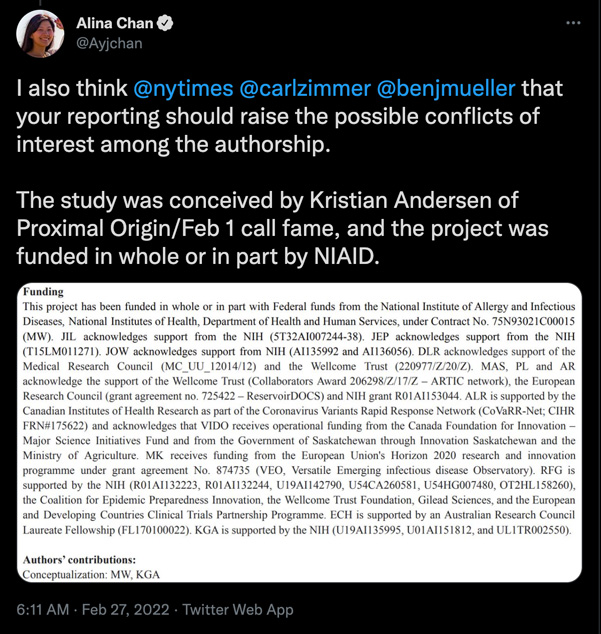
On February 27, 2022, the day many of the news outlets ran stories on the new studies, Chan tweeted: “I […] think @nytimes @carlzimmer @benjmueller that your reporting should raise the possible conflicts of interest among the authorship. The study was conceived by Kristian Andersen of Proximal Origin/Feb 1 call fame, and the project was funded in whole or in part by NIAID.”
Regarding the conflict of interest, Chan noted a significant name: Kristian Anderson. Anderson, a credited author on both of the new studies which suggest COVID-19 originated at the Wuhan Market, is another scientist that was part of Fauci’s email exchange in early 2020.
Anderson co-authored a scientific study titled, “The proximal origin of SARS-CoV-2” in Nature Medicine on March 17, 2020. This is the same article Dr. Francis Collins referred to in his email to Fauci. In fact, Anderson sent drafts of the study to Collins and Fauci with Fauci ultimately giving his final approval prior to publication.
The first draft of the article was shared with Collins and Fauci on February 4, 2020, only three days after the Feb. 1 conference call wherein Fauci and Collins were warned that the virus may have leaked from the WIV.
In its letter to Secretary Becerra, The House Committee states, “It is unclear what, if any, new evidence was presented or if the underlying science changed in that short period of time, but after speaking with Drs. Fauci and Collins, the authors abandoned their belief [that] COVID-19 was the result of a laboratory leak. It is also unclear if Drs. Fauci or Collins edited the paper prior to publication.”
Of course, scientists naturally change their minds when new evidence is presented, and Anderson explained to the New York Times (NYT) last year that he “hadn’t yet performed more in-depth analyses to reach a conclusion” and was sharing “preliminary observations” in those 2020 emails. (Granted, the NYT also continued to quote Peter Daszak as an authoritative source on COVID-19’s origins even after The Lancet’s conflict of interest addendum).
As for her issue with funding, Chan points to the fact that both studies were funded by the NIH and NIAID. Though she doesn’t offer specifics as to why funding from these institutes would be problematic, it is worth noting that the NIH and NIAID, which is under the direction of Dr. Fauci, funded the WIV’s research on bat coronaviruses.
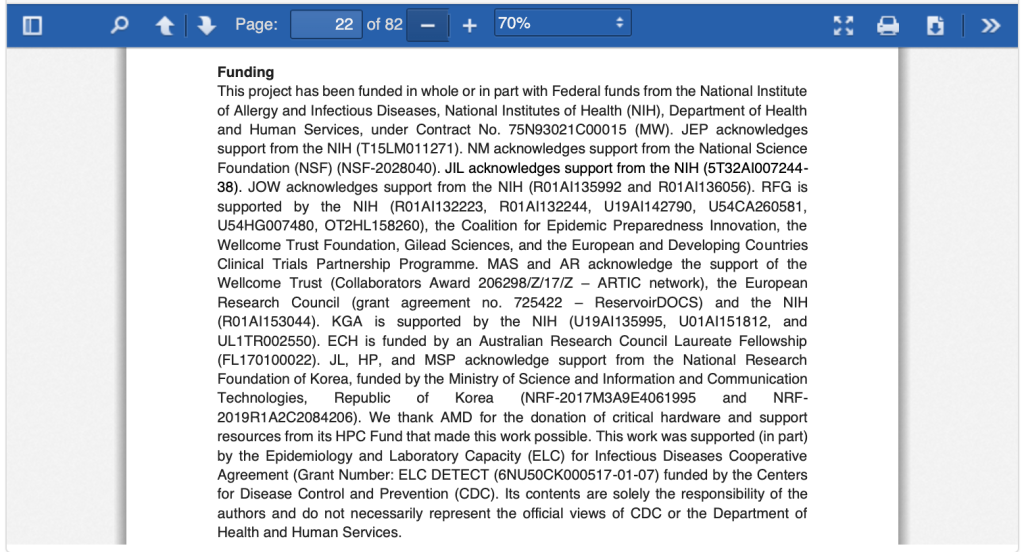
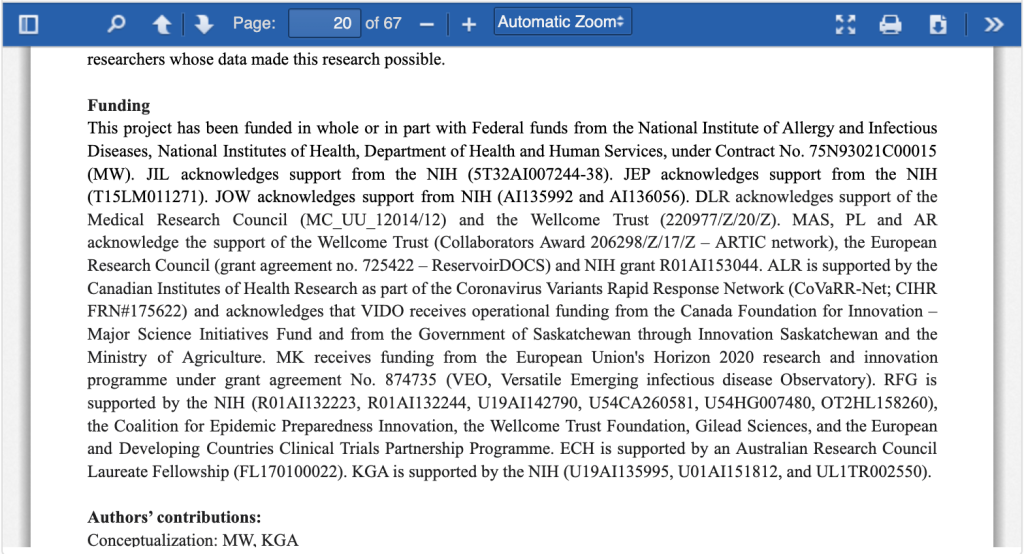
Science, Media, and Trust
Understanding how COVID-19 originated is crucial to preventing future outbreaks, and making sense of the tug-of-war between the Lab Leak and Market Theories is no simple task—especially when taking the extensive context into account.
On one hand, the very purpose of science is to discover truth, and journalists are to report it. On the other hand, the continual shape-shifting of the narrative and lack of scientific and journalistic integrity has, for some, warranted hesitation when it comes to trusting the science.
Trust was once earned by these professions, but it seems that, at least in some cases relating to the virus’s origin, journalists and scientists alike have taken that trust for granted.
This is apparent in the way CNN’s Brian Stelter feels entitled to Americans’ trust when he complained that more people trust Joe Rogan when it comes to COVID-19 related topics than “real newsrooms.”
And it’s poignantly evident in Fauci’s “shiny object that will go away” comment.
But trust is the most valuable resource of any institution. As French Philosopher Fabrice Midal wrote, “If I trust in what you tell me, it’s precisely because I can’t be absolutely certain of it.”
Author: Bo John Brusco









4 Responses
Understanding how C-19 originated absolutely is not crucial to preventing the next pandemic.
Nice job! I disagree with the comment that this is not important or relevant to preventing the next pandemic. Keep doing this important work!